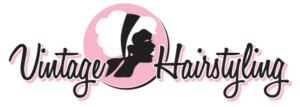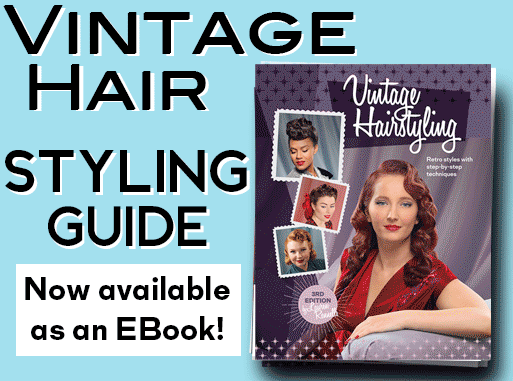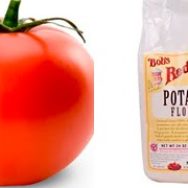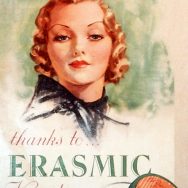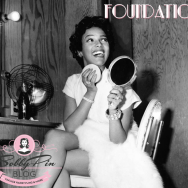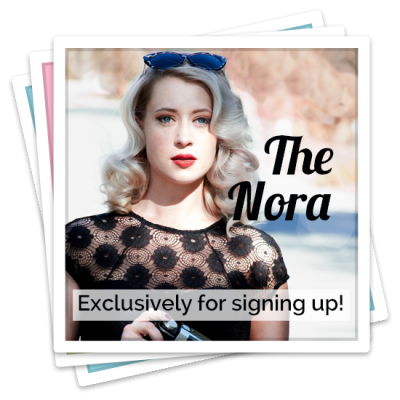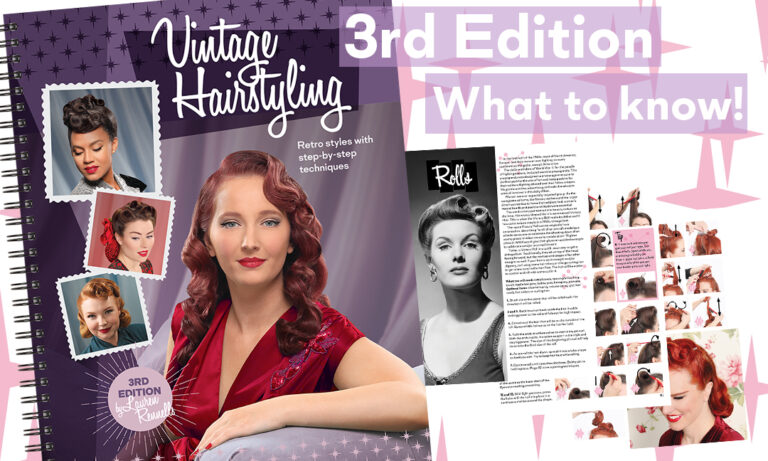
The new 3rd Edition of Vintage Hairstyling: Retro Styles with Step-by-Step Techniques is now available! After a long year, and a lot of starts and stops, the printer (printed right here in the USA), has just delivered the new book!
- What is the book Vintage Hairstyling?
- Introduction of VH
- Tools Section
- Curling
- Brushing and Shaping
- Volume
- Rolls
- Fillers
- Creative Updos
- Wet Setting
- Finishing Touches
The Book Vintage Hairstyling
If you have been thinking about purchasing the new edition, but want to know more about it, you have come to the right place! If you are unfamiliar with what this book is or what the 2nd Edition was, here is a quick synopsis. Vintage Hairstyling is a tutorial book on recreating hairstyles from the 1920s, 1930s, 1940s, 1950s and 1960s with start to finish instructions using hundreds of detailed photographs.
The book includes a breakdown of the techniques used in the past, modern equivalent options to achieve the same look, and ideas on combining elements to suit your hair and tons of advice to perfect your skills.
Introduction
The introduction of the 3rd Edition starts at the beginning. What is vintage hair and why do we love it so much? These first pages also include info on how to use the book to get the most out of it and terms to know that will be used throughout the book.

The next few pages cover defining elements of each of the 5 decades of the 1920s-1960s. And the Design section explains how to use the elements of hair design to recognize and create your own unique hairstyle that looks like the time period you would like to emulate. Also included are some of the examples in the book of problem solving techniques on making your hair texture and length work for different vintage hairstyles and differences in hairstyle outcome you can expect with different textures and length.
Tools
The tools section of the book is updated with the latest tools available today for creating vintage hair. These are my favorite go-tos for when I am styling hair. I have expanded this section from the 2nd Edition with tips on choosing the right tools for meeting your goals and the pros and cons of using some tools over others.
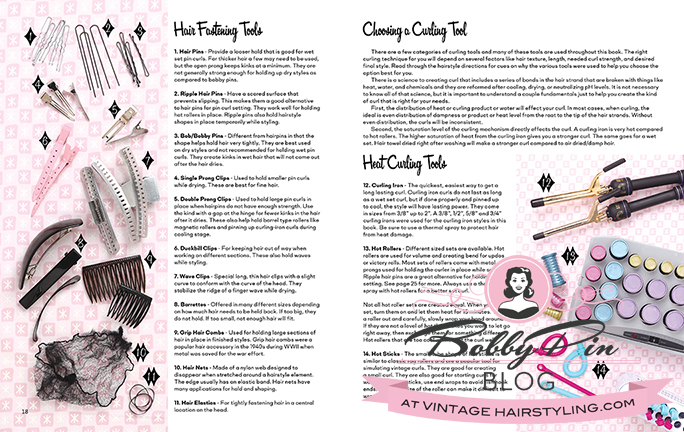
Curling
Curling is the beginning of 99.9% of vintage hairstyles. Curls are the building blocks of a vintage hair. The curls section gives you the start of what you need to know to do the full hairstyles in the rest of the book.
In the curling section, you will find all of the basics to consider when designing your curl plan. The elements of curl, including things like base direction, pivot point and placement, all contribute to a successful curl set for a beautiful vintage hairstyle.
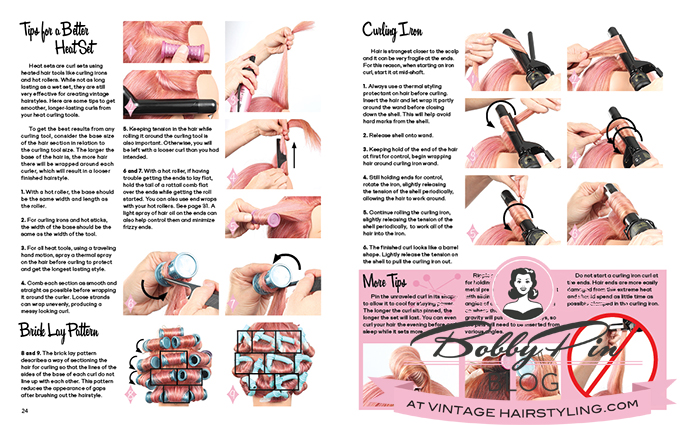
In the 3rd Edition, I mixed things up a little. In the middle of these technique sections, you will find full hairstyle directions to put the material in better context. I highly recommend everyone read these hairstyles directions to get a better understanding of the concepts.
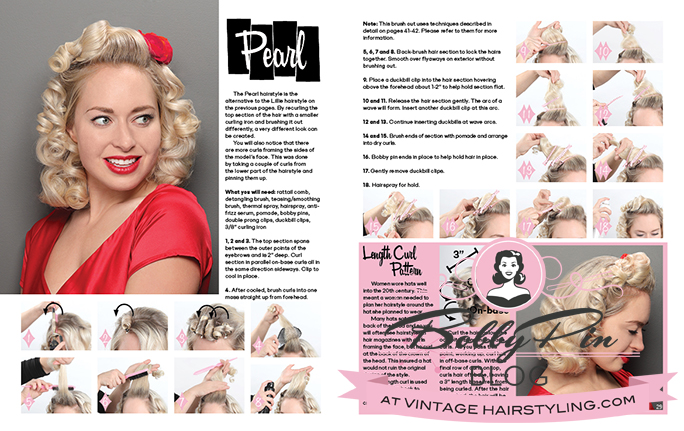
The curls section covers in depth wet set curls as well. Wet setting techniques, like pin curls, were the most common curling technique for most of the time between the 1920s through the 1960s. The wet set included lots of different types of rolling techniques and this curling section covers all the things to consider when designing your curl set.
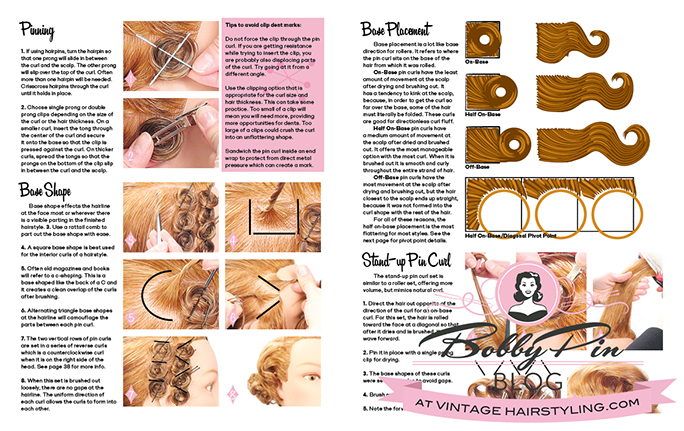
Brushing and Shaping
After you have the curls, you need to know how to brush them out. Think of hair like clay. You need to direct it properly to get the hairstyle you want. The brushing and shaping section covers these brushing techniques and tips that will get you to that finished style.
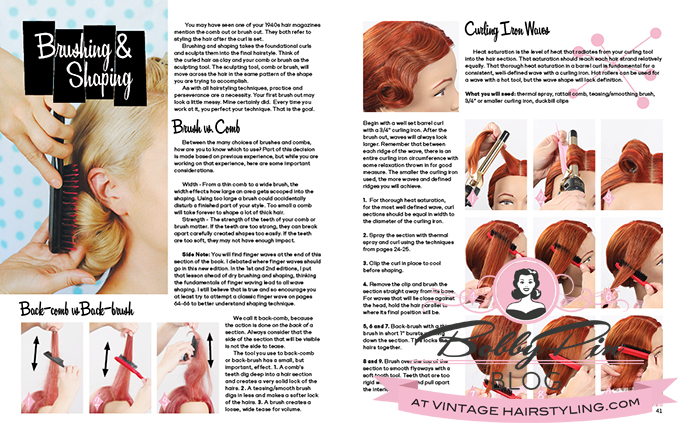
The brushing and shaping section of the 3rd Edition now includes a new feature. For many, seeing the final idea in your head, but then trying to figure out how to get there from scratch, can be overwhelming. Here, I show you hairstyles that were created with the exact same curl, but I used different brushing techniques to achieve different looks.
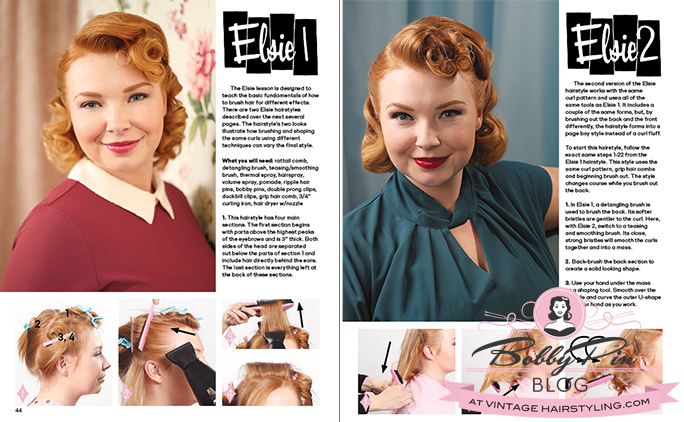
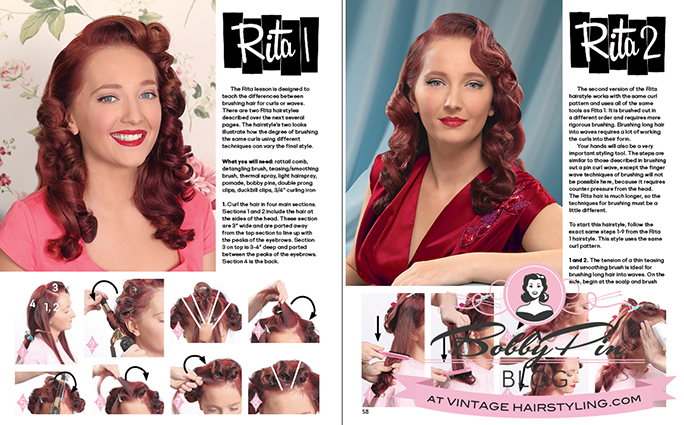
The finger wave. The water wave. The Marcel wave. Waves are beautiful and there are different ways to get there. The brushing and shaping section covers what you need to know get the vintage wave you want.
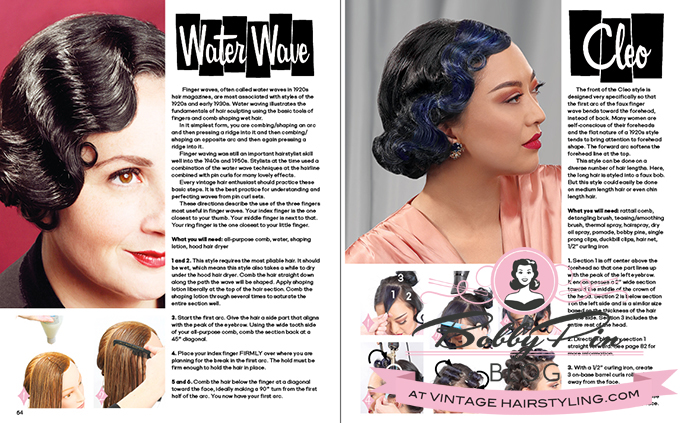
Volume
Volume is good and starts at the root. And volume is something you should consider in every vintage hairstyle. This section covers techniques and hairstyles that make the most of volume. Don’t skip reading this section just because you don’t think you want big hair. There are plenty of tips in here that can help you in other ways.
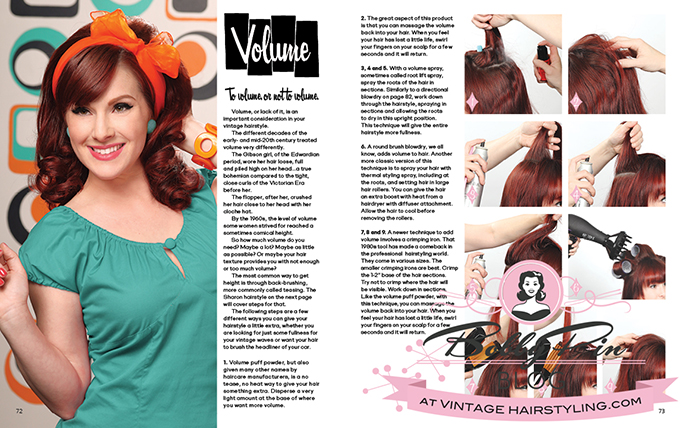
Victory Rolls
The classic victory roll has become a staple in the vintage hair world and this section covers everything you need to know to use these rolls in lots of different ways.
The first few pages cover the basic techniques that contribute to what your victory roll looks like and what you can do to perfect your technique so you get great-looking, stable rolls every time.
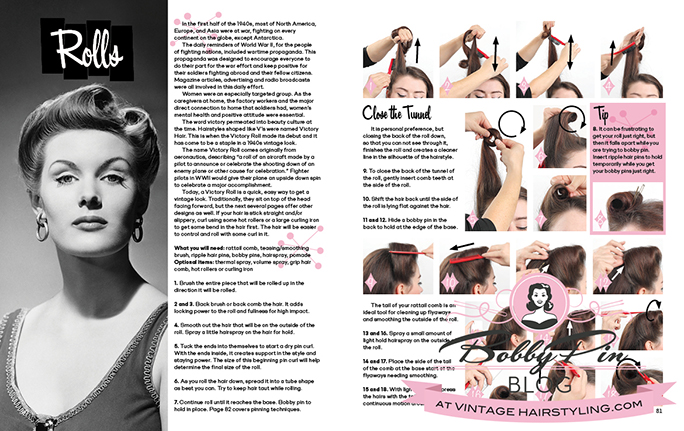
There are several start-to-finish hairstyles using various roll techniques to create lots of different looks in the rolls section of the 3rd Edition. Using different hairstyling techniques, there are so many possibilities with the simple style concept of rolls.
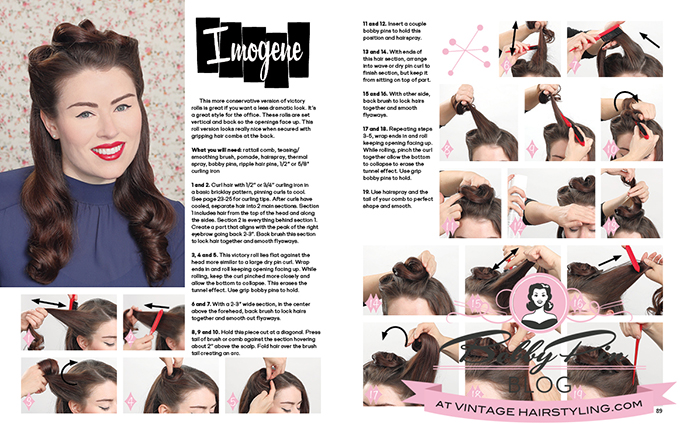
The Evelyn hairstyle is a carry-over from the 2nd Edition. You will find it in the rolls section, because it uses the basic victory roll for a classic dramatic hairstyle.
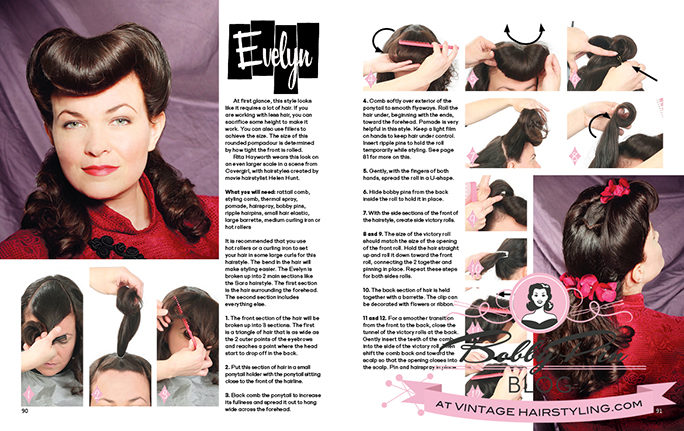
Fillers
The fillers section is brand new to Vintage Hairstyling and I am very excited about it. I touched on fillers (hair rats) in the 2nd Edition, but here I go into full styles that rely on fillers for shape and security.
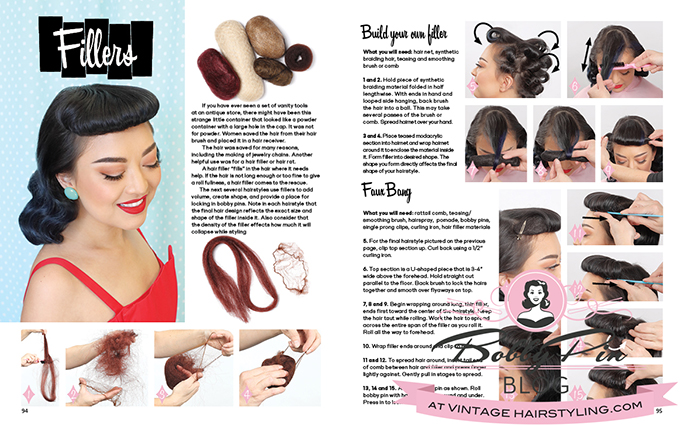
Fillers provide excellent security for holding hair in place. In the Eva hairstyle in the book, fillers provide a solid foundation for the sleek, upsweeping sides of this 1940s hairstyle.
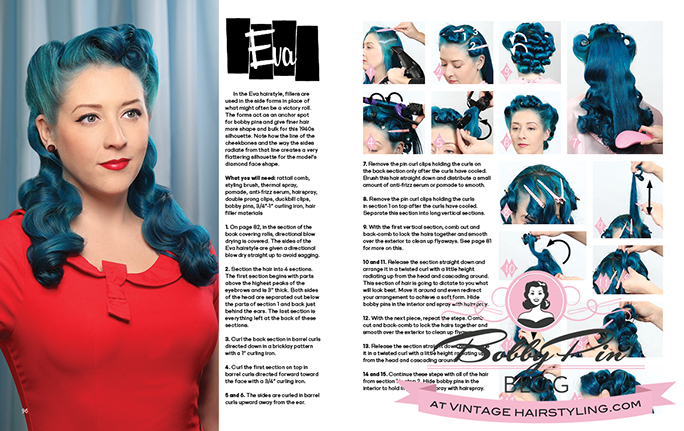
Fillers are also tremendous for guiding hair into the shape you want and providing an anchor spot for hold. In the Maxine hairstyle of the book, a filler provides volume and a solid anchor point for the intricate updo.
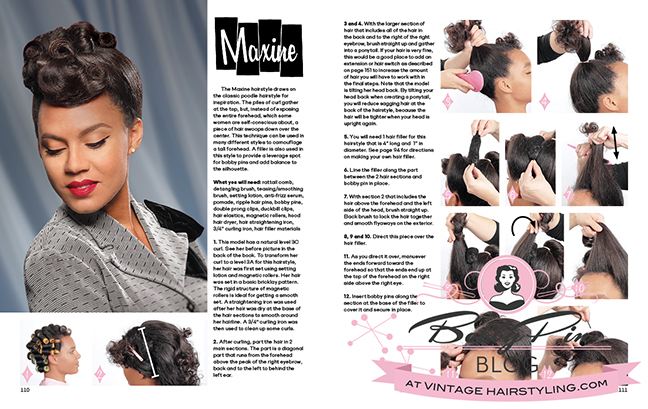
Creative Updos
The creative updos section continues from the filler section to show you creative ways to do your updo. There are many ways to use up-style techniques to achieve the vintage hair silhouette. The silhouette is a must-use part of imitating vintage hairstyles.
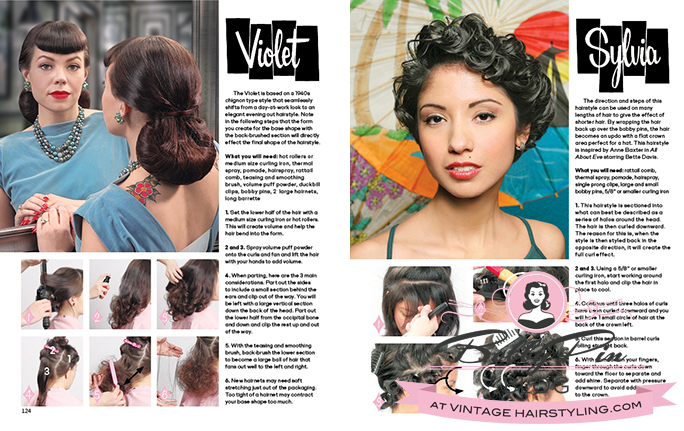
In the updo section, there are so many techniques for securing your hair in shapes that flatter the face. No matter your hair length or texture, there is so much to help you in this section.
As always, I encourage the reader to read every hairstyle, even if it is not the hairstyle you are trying to achieve. In an effort to save space, I try not repeat myself in the book too much, so there are different, great tips in every vintage hairstyle description.
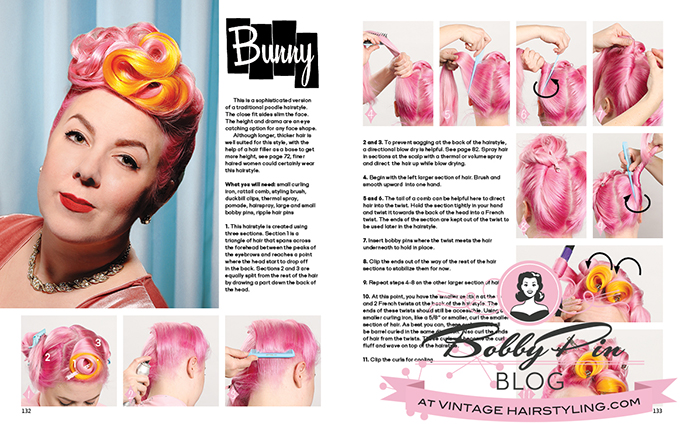
Wet Setting
Why wet set? The wet set gives you the most control over the hairstyle. The combination of the techniques of base direction, curling, and shaping are the best way to really achieve your exact goals. And the control it gives you over the base of the curl at the scalp is invaluable.
Wet setting also will give you a ton of insight into how to use heat curling to get your desired hairstyle. It’s all interconnected.
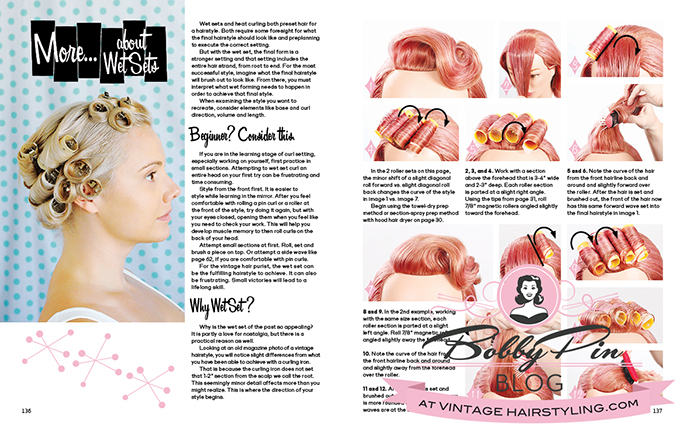
With the wet setting section, combined with the information in the curling section, you will have insight into the many things you should consider when designing your wet set roadmap.
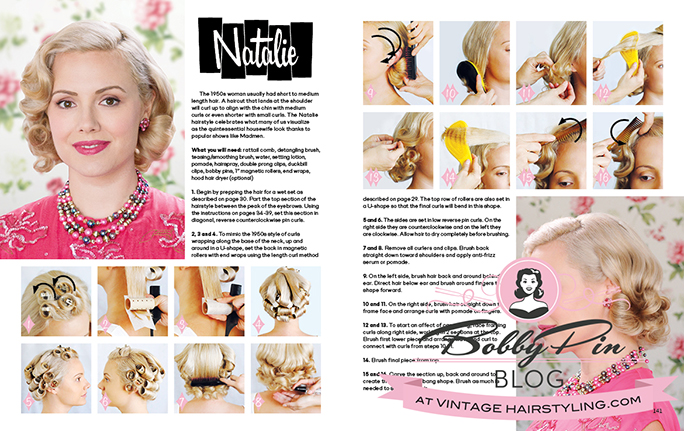
Like the rest of the book, favorite looks from previous editions are included here to bring everything full circle. Get it? Curl. Full circle.
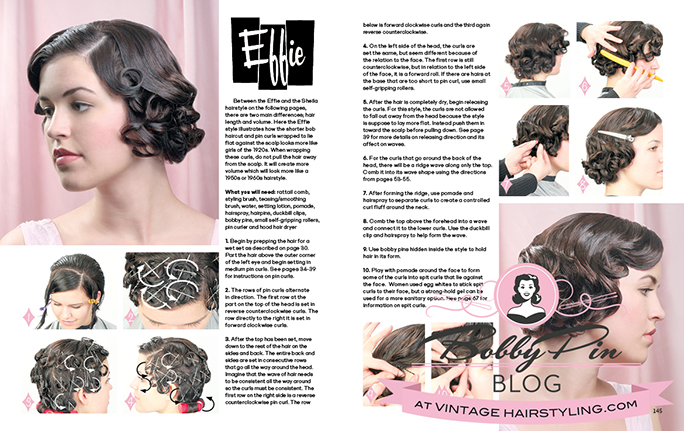
Finishing Touches
The finishing touches section of the book is just that…the finishing touch. Here you will find some extra advice and tips that will wrap up your vintage beauty journey!
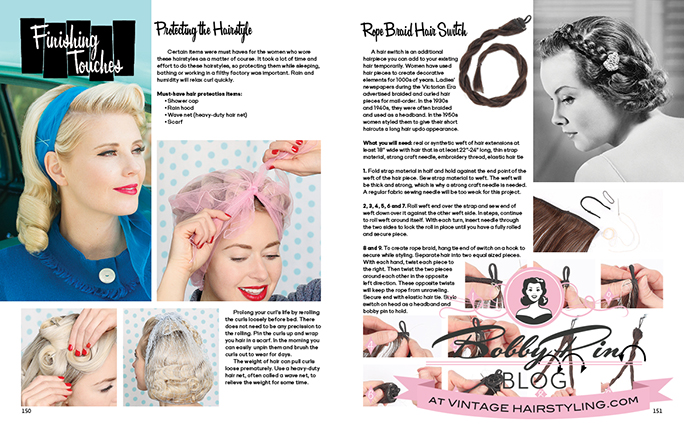
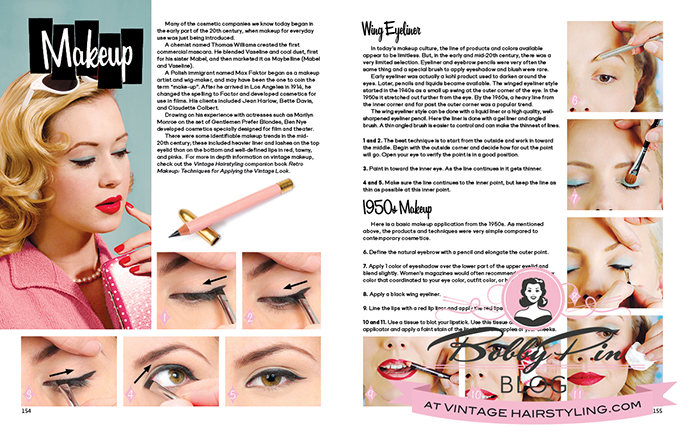
Thank you…
I hope this blog post was helpful for you. The 3rd Edition of Vintage Hairstyling: Retro Styles with Step-by-Step Techniques is available now to purchase at VintageHairstyling.com and from retailers around the globe.

available from VintageHairstyling.com
Related posts
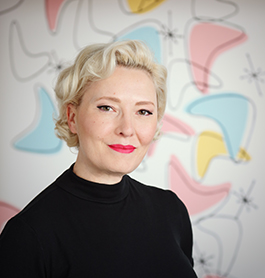
Welcome to the Bobby Pin Blog! I am Lauren Rennells and as a hairstylist, makeup artist, writer, and generally artistic over-achiever, the Bobby Pin Blog is my outlet for thoughts and research about vintage hair and makeup trends and how to recreate them today. Thank you for stopping by!
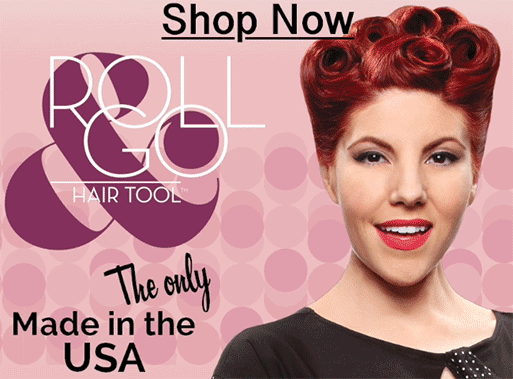
As an Etsy and Amazon associate I earn from qualifying purchases. As an independent blogger, I link these items because of my own opinions and not because of the commission I may receive.
